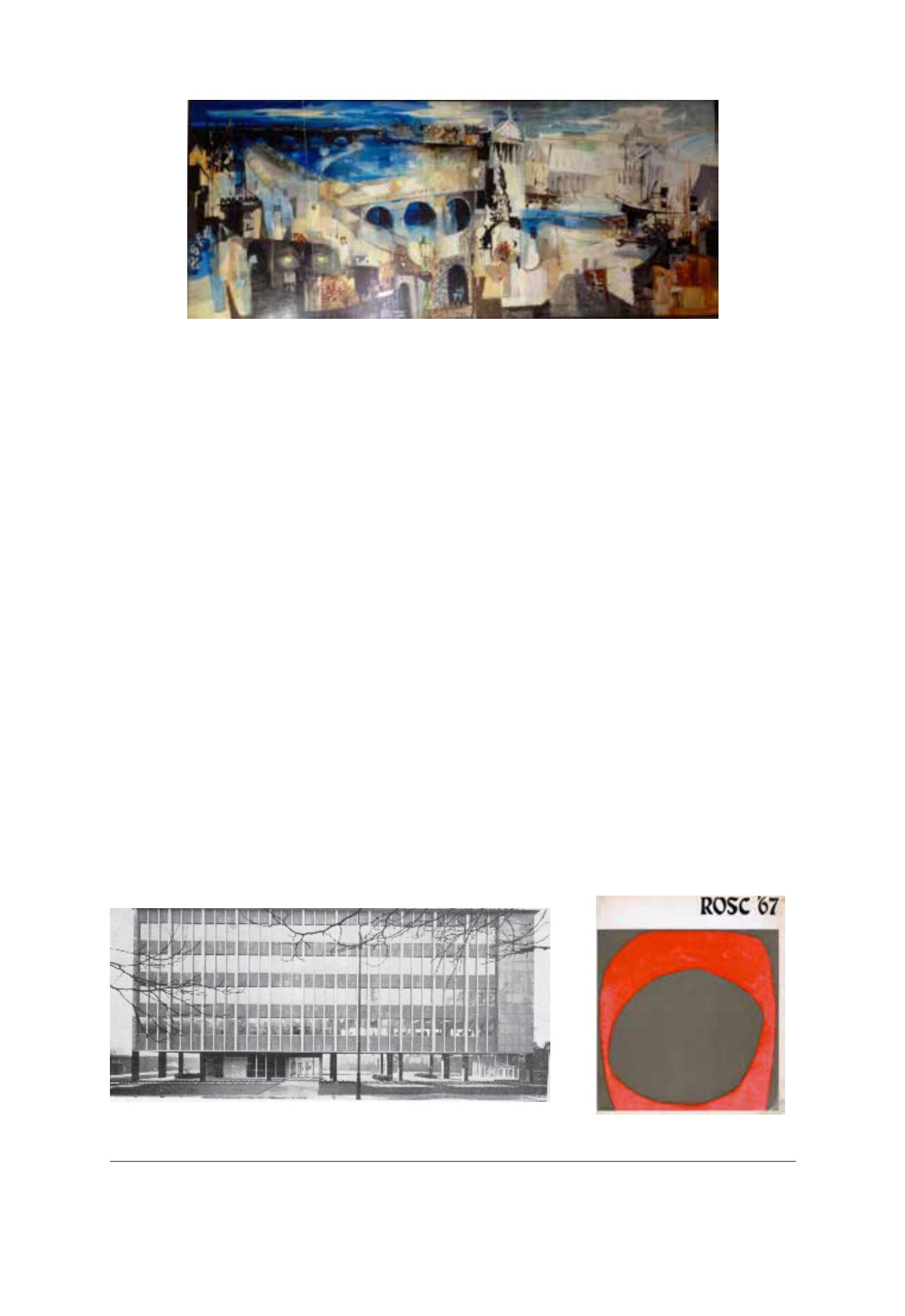

120
Campbell’s quasi cubist style remained unchanged in the 1960s and 1970s, but in the South of
Ireland a younger generation of artists had accepted modernism. In 1962, the Contemporary
Irish Art Society (CIAS) was set up.
159
In 1966, Campbell’s agent, David Hendriks, held
an exhibition entitled ‘Kinetic Art’ ahead of the contemporary international art exhibition,
‘ROSC’, meaning ‘Poetry of Vision’, in 1967. Did ‘ROSC 67’ impact on any of the Boys? It
is not known if Armstrong was one of the 50,000 visitors to the exhibition in the industrial
space of the Royal Dublin Society (RDS). O’Neill and Dillon were in London and Campbell
was in Spain. It is unlikely Campbell viewed ‘ROSC 71’ either, as it opened in December
when Campbell would have been in Spain. He was, however, in Dublin in June 1967 when
an exhibition of ‘Op Art’
160
at The Hendriks Gallery attracted considerable attention.
Following the success of the first ROSC exhibition in 1967 the government was becoming
more supportive of the arts. Campbell received a commission to execute a mural for the
reception of the Irish Life Assurance building, ‘Dublin City’, and worked with Armstrong
and Dillon on stage designs for
Juno and the Paycock
at the Abbey Theatre. In the same
year, the Campbells purchased a house off Appian Way. In 1968, Dillon and Armstrong
purchased a house together in the same area at Chelmsford Avenue, Ranelagh.
159
Basil Goulding, Cecil King, Patrick Scott, Gordon Lambert and others.
160
Not to be confused with pop art, it is a style of visual art that make use of optical illusions.
fig.199: ‘Dublin’ mural by George Campbell. Photo courtesy: Irish Life Assurance
fig.200: Irish Life building, Mespil Road, 1960’s
fig.201: ROSC 1967



















